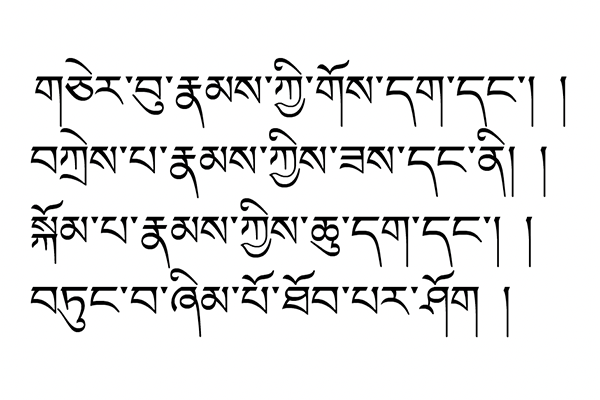Tibetan
Tibetan in its various forms and dialects is spoken across the Tibetan plateau and throughout the northern Himalayas. Although many Tibetan dialects are mutually incomprehensible, they all share a literary language whose roots extend back at least to the importation of Buddhism from India to Tibet in the seventh century. According to traditional Tibetan historical accounts, the powerful Tibetan king Songtsen Gampo sent his minister, Thonmi Sambhota, to India to develop a script for writing Tibetan. Upon his return, the script was widely disseminated and the Tibetans began an ambitious project of translating Buddhist texts from Sanskrit into Tibetan. The vast collection of translations, along with the many later indigenous Tibetan compositions, make up one of the richest resources for the study of Buddhist philosophy, psychology, ethics, arts, and medicine in the world today.
At Emory, courses focus on teaching "Standard Tibetan," a form of Tibetan that may be used across regions and has close affinities to the language as spoken in Central Tibet. In addition to spoken Tibetan, students are also introduced to the literary language, which differs somewhat from the spoken vernaculars but which, like Standard Tibetan, is widely known and understood in the different regions. As in the study of all languages, the study of Tibetan brings with it the potential for much greater understanding of the people who speak the language and their culture. The diversity of Tibetan language reflects the diversity of Tibetans themselves -- from traders to aristocrats, from laymen to monks, from farmers to nomads. The study of Tibetan is the first step toward entry into the world of the Tibetan people.

